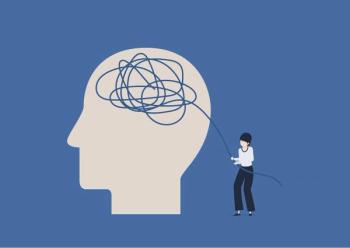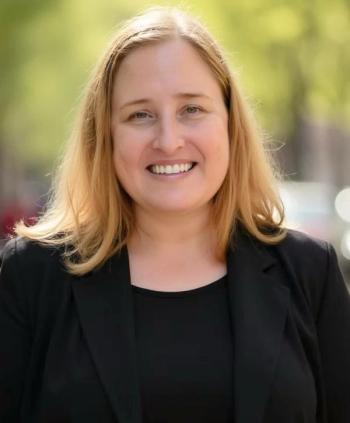
- Vol 40, Issue 8
A Menagerie of Unfortunate Events
"No matter where you are in your career, it is our generation of providers who have the opportunity to facilitate how the medicine of today evolves into the medicine of tomorrow."
FROM THE EDITOR
As I approach my 64th birthday, I find myself reflecting on my life, especially on my experiences and observations in my chosen medical field of psychiatry. There is no doubt that much progress has been made; the foundation of knowledge in pathophysiology, pharmacology, genetics, neuroscience, brain development, and neuroimaging that existed when I was a medical student in psychiatry has matured in significant ways. In my view, we have grown from childhood to early adolescence, and typical to that age bracket, we think we know more than we do. Although some of the advances have been truly remarkable, I cannot help but feel sadness, frustration, and disappointment about other changes to the practice of psychiatry that I never could have imagined as a young and naïve member of the profession.
Insurance-Centric Practice
When I was training as a medical student and psychiatric resident in the 1980s, I recall medicine functioned in a patient-centric paradigm. Initial evaluations were thorough, and all available diagnostic tools would be used to rule in or rule out diagnoses as quickly as possible to determine the likely primary source of our patient’s pain and suffering. The results would lead to implementation of a comprehensive treatment plan without the intrusion of an insurance company approving or denying tests, procedures, or treatments that the treating physician felt was medically indicated.
Patients and their families did not lose sleep at night worrying about the financial injuries they would sustain due to high annual deductibles and abundant required co-pays and co-insurance that might lead to the difficult decision to stop or postpone treatment because the economic burden was not sustainable. Particularly in psychiatry, a typical adequate inpatient psychiatric admission could range from a week to a month, depending on the patient’s diagnosis and treatment response. Many of the medications we prescribe for
Medication Formularies
A reasonable standard when choosing a medication for a patient is to ask whether you would want this same treatment for yourself or a family member under the same situation. Our understanding of pharmacology continues to evolve, and with it, novel mechanisms of action or improvements in the risk/benefit profile of members of specific drug classes. Some older drugs remain first line, such as lithium, which I think is underutilized in psychiatry. On the other hand, haloperidol, which was approved by the US Food and Drug Administration in 1967, continues to be used regularly, despite its high incidence of prolactin elevation, movement disorders, cognitive blunting, and causing secondary negative symptoms in patients with
Electronic Health Records
There was a time when a progress note could be a single sentence. I completed my medical internship at the Medical Center Hospital of Vermont in Burlington, where the previous gold standard SOAP note was created to simplify yet accurately document the clinical visit (
The note paints the overall picture, and any colleague would have no trouble understanding this case, should they be covering the practice. I would write the note in a template while I was with the patient, and I was able to maintain eye contact and feel present with the patient.
In today’s medical documentation environment, it is not uncommon for a medical provider to spend more time on documentation in the EHR than with the patient. Alain Chaoui, MD, former president of the Massachusetts Medical Society, was quoted at a 2019 conference as saying, “Right now, it feels like physicians are a slave to their EHRs. There’s a high amount of burnout—emotional burnout, depersonalization, and a low sense of professional accomplishment.”1
Payers (ie, Medicare, Medicaid, private insurances) have varying documentation requirements. If a practice is audited by one of these payers and the documentation is not complete, the payer can request a refund for those services. In my opinion, EHRs exist for billing and administration, not for competent documentation of patient care.
Delays in Access to Treatment
I often hear this analogy from psychiatric colleagues: What if it took as long to get evaluated when you are having chest pain and shortness of breath as it does for severe depression or acute onset psychosis? This is a reasonable question, and I ask you, reader: Why is there such a disparity?
Throughout my years in psychiatry, time to an initial evaluation has always been delayed compared with other medical specialties. The COVID-19 pandemic seems to have amplified this delay in all medical specialties, but more so for a psychiatric evaluation. Consider this: The Recovery After an Initial Schizophrenia Episode (RAISE) study,2 funded by the National Institute of Mental Health, determined that the median duration of untreated psychosis in the United States following a first psychotic episode was 74 weeks. When the data were further analyzed, patients who had treatment provided earlier in their psychotic episode did remarkably better at study outcomes.
Although time to schedule an initial psychiatric evaluation varies remarkably around the United States, in my travels, I consistently hear that the average wait is 3 to 6 months. This is unacceptable. Many initiatives have been implemented to improve this delay, including clinics with coordinated specialty care, integrated practices with psychiatry as one of the multispecialties, and initiatives to educate primary care providers (PCPs) to serve as first-line psychiatric providers. This last one is most troubling to me, as PCPs are already squeezed for time just to do their usual practice responsibilities.
Amplifying this problem is the chronic shortage of psychiatrists in the United States, which is only increasing as the baby boomers retire. Additionally, a significant subset of psychiatrists accept only self-pay patients; this practice excludes the vast majority of patients with
15-Minute Med Checks
I often reflect with nostalgia on the structure of my first postresidency job as a psychiatrist. I worked in a community hospital clinic where I routinely scheduled follow-up visits for whatever time and frequency upon which my patient and I agreed. After an initial evaluation, I would commonly see patients for 30 minutes weekly until they were stable, and then extend the time progressively to anywhere from monthly to every 3 months. That 30-minute visit allowed time to address the acute problem and to steadily obtain additional history, which often opened doors for additional issues to address and improve function and quality of life. I met a handful of patients for an hour per week, spending the first part of the session managing the medication issues and engaging in different types of psychotherapy depending on the diagnosis, patients’ motivation, and likelihood of benefit in the remaining time.
For example, I treated a professional in his early 30s who presented with severe depression. We met for an hour weekly for several years. After 1 year of weekly visits, he felt safe enough to share with me severe obsessive-compulsive symptoms that had been present for more than 5 years; he was initially too ashamed and embarrassed to share this with me. I was then able to modify both his medication and psychotherapy to target these functionally impairing symptoms.
I continue to believe that the standard and expected
Virtual Psychiatry/Telehealth
March 16, 2020, is a day I will never forget. In response to the raging COVID-19 pandemic, that Monday morning, our entire community mental health center transitioned to virtual treatment only, except for our long-acting injectable antipsychotic clinic. For the next year, I practiced virtually from my home office and—by all means—it was the right thing to do.
Yet, I had never before practiced virtually. Although I was able to provide treatment, it never felt natural or adequate to me. As soon as I was allowed, I returned to the clinic; however, most of my patients did not. Up until about 6 months ago, approximately 70% of my patients chose to continue with virtual appointments. But since that time, upon my request and encouragement, more than 90% of my patients have resumed in-person visits, and most are pleased that they did.
Don’t get me wrong. I absolutely realize the many benefits virtual medicine provides, such as care for populations who otherwise would not get treatment. Virtual consultations bring an expert clinician into the most remote community hospitals to advise on tough cases. And virtual meetings have many benefits in large systems, allowing for greater attendance and engagement. However, maybe I am just old-fashioned, but returning to direct in-person care has only reenforced my opinion that virtual treatment should be reserved for those situations when in-person treatment is not possible. Especially considering the
Concluding Thoughts
I must admit, largely due to the issues reviewed, I feel some burnout, which has become all too common in medicine. The competent delivery of health care has become a minefield of stress that seems to increasingly wound the healers with each passing year.
Yet my 32 years practicing psychiatry has taught me much about the complexities of medicine, money, insurance, politics, culture, and society. I have learned that the glass is not half empty or half full; it is both.
Despite the aforementioned unfortunate events, I continue to love the practice of psychiatry. Working with my patients is a privilege, I learn from each of them at every visit.
For my colleagues starting their first year as clinical psychiatrists, I wish for you a meaningful, yet challenging career. In 32 years when you reflect back on your career, I am hopeful that many of the current challenges that I have outlined will have evolved into a healthier health care system.
No matter where you are in your career, it is our generation of providers, with the decades of lived experience and understanding of the complex landscape of medicine, who have the opportunity to facilitate how the medicine of today evolves into the medicine of tomorrow.
Dr Miller is Medical Director, Brain Health, Exeter, New Hampshire; Editor in Chief, Psychiatric Times; Staff Psychiatrist, Seacoast Mental Health Center, Exeter; Consulting Psychiatrist, Exeter Hospital, Exeter; Consulting Psychiatrist, Insight Meditation Society, Barre, Massachusetts.
References
1. Mearian L. Poorly designed systems make doctors ‘a slave to their EHR’. Computerworld. May 22, 2019. Accessed July 17, 2023.
2. Kane JM, Robinson DG, Schooler NR, et al.
Articles in this issue
over 2 years ago
Science and Art in Cognitive Behavioral Therapyover 2 years ago
The Poetic Bodyover 2 years ago
Poetic Reflections Yield Lessons Learnedover 2 years ago
Creativity Outlets: The Clinician’s Battery for Rechargingover 2 years ago
A Creative Journeyover 2 years ago
Poetry and Meover 2 years ago
National Academy of Medicine Works on AI Code of Conductover 2 years ago
What I LoveNewsletter
Receive trusted psychiatric news, expert analysis, and clinical insights — subscribe today to support your practice and your patients.














